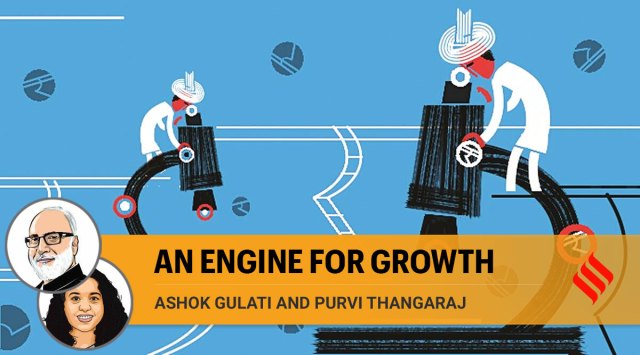
With the G20 presidency, India has an opportunity to set the global agenda and be in the limelight for at least a year. But, if it has to be a real leader, say a Vishwaguru, it has to do some heavy lifting for quite a number of years. The real Vishwaguru today is the US, which has retained its global leadership for almost a century since World War I. It is not just its military might but its technological superiority in various fields that has made the US the largest and most competitive open economy.
How did the US achieve all this? Thanks to the culture of innovation backed by a solid base of research and development (R&D). Innovation is rightly recognised as an engine for economic growth and Prime Minister Narendra Modi is right when he extended the old slogan of Lal Bahadur Shastri and Atal Bihari Vajpayee, jai jawan, jai kisan, jai vigyan, to include jai anusandhan (research and innovation). In 2016, the Modi government launched the Atal Innovation Mission (AIM) to create an ecosystem to promote innovation and entrepreneurship in the country. All these are steps in the right direction, but the foundation of all this lies in how much India actually spends on R&D, both in absolute terms as well as a percentage of its GDP, in relation to other G20 countries.
Even the Sustainable Development Goals (SDGs) Agenda 2030 aims to “build resilient infrastructure, promote inclusive and sustainable industrialization and foster innovation”. In particular, SDG Target 9.5 calls upon nations to encourage innovation and substantially increase the numbers of researchers as well as public and private spending on R&D. Gross domestic expenditure on R&D (GERD) is the proposed aggregate to quantify a country’s commitment to R&D.
According to UNESCO’s Institute for Statistics (UIS) latest report, the G20 nations accounted for 90.6 per cent of global GERD (current, PPP$) in 2018. Global R&D expenditure has reached a record high of about 2.2 trillion current PPP$ (2018), while Research Intensity (R&D expenditure as a percentage of GDP) has gradually increased from 1.43 per cent in 1998 to 1.72 per cent in 2018. Though looking at spending in PPP terms is a reasonable metric for welfare measurement in the economy, when it comes to technological prowess in high-end activities of R&D, it all boils down to measuring hard currency in US dollars.
The G20 countries, accounting for 86.2 per cent of the global GDP and over 60 per cent of the global population in 2021, are the leaders in every way. The US leads the G20 by spending $581.6 billion on R&D followed by the European Union ($323 billion), and China ($297.3 billion) in 2018. India lags way behind with a paltry R&D expenditure of only $17.6 billion in 2018. In terms of their relative shares in G20 R&D expenditure, the US is way ahead with 36 per cent, followed by the EU (20 per cent), and China (18 per cent). India’s share is less than 1 per cent of G20 R&D expenditure in dollar terms.
The lesson is very clear: To realise its dream of becoming a Vishwaguru, India has a long way to go. And the only way to achieve this seems to be by repurposing its massive expenditures on various subsidies (“revdi” culture) such as on food, fertilisers, PM Kisan, free power, and even the PLI scheme for manufacturing towards a multi-fold increase in expenditure on research and innovation.
While the absolute expenditure on R&D provides a sense of scale, their percentage to the respective GDP provides the research intensity (RI). It is interesting to note that in 2018 for which the latest information is available, South Korea has the highest RI at 4.43 per cent, followed by Japan (3.21 per cent), Germany (3.09 per cent), the US (2.83 per cent), France (2.19 per cent), China (2.14 per cent) and EU (2.02 per cent). India is ranked 17th in the G20, with a RI of 0.65 per cent (see infographics).
However, there are many non-G20 countries that have a higher RI than even the countries in the G20. But their absolute expenditure on R&D is relatively very small. One of these non-G20 countries is Israel, which, while having an R&D expenditure of just $18.6 billion, a population of only 9.3 million and a per capita income of around $51,430, has the highest RI of over 5 per cent. No wonder, Israel is known as a land of innovations, be it in defence or agriculture.
The innovation system in Israel is a fundamental driver of its economic growth and competitiveness. The government has played an important role in financing innovation, particularly in SMEs, and in providing well-functioning frameworks for innovation, such as venture capital (VC), incubators, strong science-industry links, and high-quality university education. Israel builds a strong case to show that despite being a smaller nation, sustainable growth can be achieved by prioritising investments in R&D. A lesson India can learn.
During India’s G20 presidency, the engagement group, Science20, has the theme of “Disruptive Science for Innovative and Sustainable Development” focusing on universal holistic health; cure and prevention of disease; clean energy for a greener future; and connecting science to society and culture. It will be interesting to see how India can leverage this for the shared prosperity of the world.
But one thing is clear: India needs not only technological development and brilliance in various sectors ranging from defence to agriculture to manufacturing, but it desperately needs innovations that can safeguard its basic environment — land, water, and air. India has shown its global leadership in the IT and digital world. If it can show similar breakthroughs in other sectors, it will turn its aspiration of Vishwaguru into reality and confidently enter the golden era of Amrit Kaal.
Gulati is Distinguished Professor and Thangaraj a researcher at ICRIER